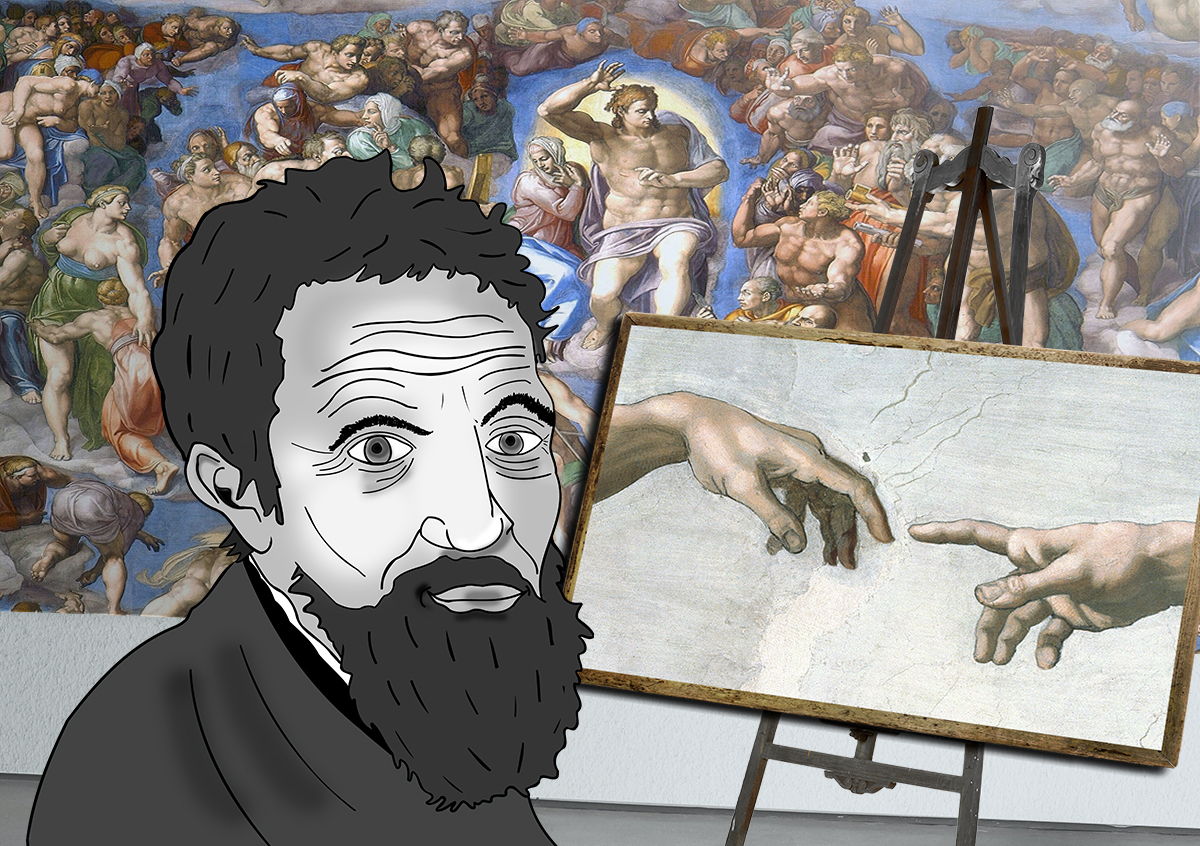
Michelangelo Buonarroti, a name that resonates with the echoes of the Renaissance, remains one of the most revered artists in history. Known primarily for his sculptures like ‘David’ and ‘Pieta’, Michelangelo was also a master painter whose works have left an indelible mark on the world of art. This article delves into the realm of Michelangelo’s paintings, exploring their artistic significance, unique features, and the legacy they have left behind.
The Early Years and Artistic Development
Michelangelo’s journey into the world of art began at an early age in Florence, Italy. His early works were predominantly in sculpture, but his foray into painting would soon reveal his multifaceted genius. Michelangelo’s paintings from this period exhibit a blend of realism and emotional depth, qualities that would become hallmarks of his later works.
The Sistine Chapel Ceiling: A Testament to Genius
Perhaps the most famous of all Michelangelo paintings is the Sistine Chapel ceiling, painted between 1508 and 1512. This monumental work, commissioned by Pope Julius II, depicts scenes from the Book of Genesis, including the iconic ‘Creation of Adam’. The ceiling showcases Michelangelo’s mastery of human anatomy, his understanding of perspective, and his ability to convey profound religious themes through art.
The Last Judgment: A Vision of the Apocalypse
Another masterpiece among Michelangelo’s paintings is ‘The Last Judgment’, painted on the altar wall of the Sistine Chapel. Completed in 1541, this awe-inspiring fresco depicts the second coming of Christ and the final judgment of souls. Michelangelo’s use of vivid colors, dynamic compositions, and emotional intensity makes this painting a powerful statement on divine retribution and human redemption.
Unique Techniques and Artistic Innovations
Michelangelo’s paintings are renowned for their innovative techniques. His use of fresco, a method of painting on freshly laid wet plaster, allowed for vibrant, lasting colors. Michelangelo’s technique in fresco painting was both labor-intensive and challenging, requiring a precise application of pigment before the plaster dried. His ability to create lifelike figures and imbue them with emotion and movement set a new standard in the art world.
Influence on the Renaissance and Beyond
The influence of Michelangelo’s paintings on the Renaissance cannot be overstated. His works inspired countless artists, both contemporaries and successors, to explore new approaches to painting. The expressiveness and anatomical precision of his figures, along with his innovative use of color and composition, played a pivotal role in shaping the artistic landscape of the time.
The Legacy of Michelangelo’s Paintings
Michelangelo’s paintings have left an enduring legacy in the world of art. They continue to be celebrated for their artistic brilliance and emotional depth. Art historians and enthusiasts alike study Michelangelo’s paintings to gain insights into the genius of this Renaissance master. His works not only reflect the ideals of the Renaissance but also continue to inspire modern art and culture.
The Enduring Appeal of Michelangelo’s Works
Today, Michelangelo’s paintings attract millions of visitors to the Sistine Chapel and other galleries where they are displayed. Their appeal lies not just in their technical excellence but also in their ability to communicate universal themes of human existence, spirituality, and beauty.
Conclusion
In conclusion, Michelangelo Buonarroti’s contributions to the world of painting are monumental. His works, characterized by dramatic intensity, technical proficiency, and profound thematic depth, have firmly established him as one of the greatest painters of all time. Michelangelo’s paintings continue to awe and inspire, serving as a testament to the enduring power of human creativity and artistic expression.
Andres Walsh
Related posts
Stay connected
Today's pick
- The Importance of Professional Handyman Services for Your HomeYour home is your sanctuary, a place of comfort and security, but maintaining it can be a daunting task. From routine maintenance to unexpected repairs, there’s always something that needs attention. While many homeowners might be tempted to tackle these jobs themselves, not all tasks... The post The Importance of Professional Handyman Services for Your […]
